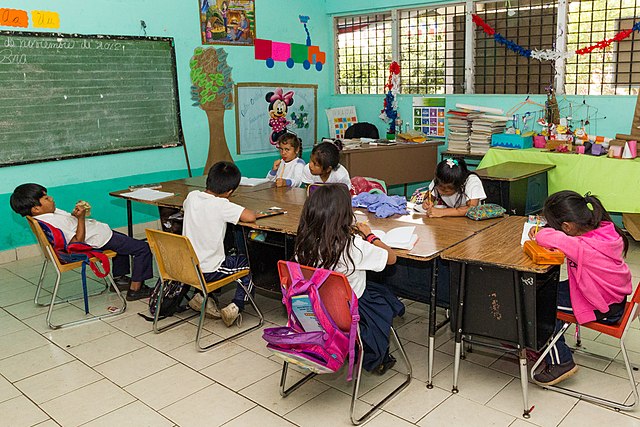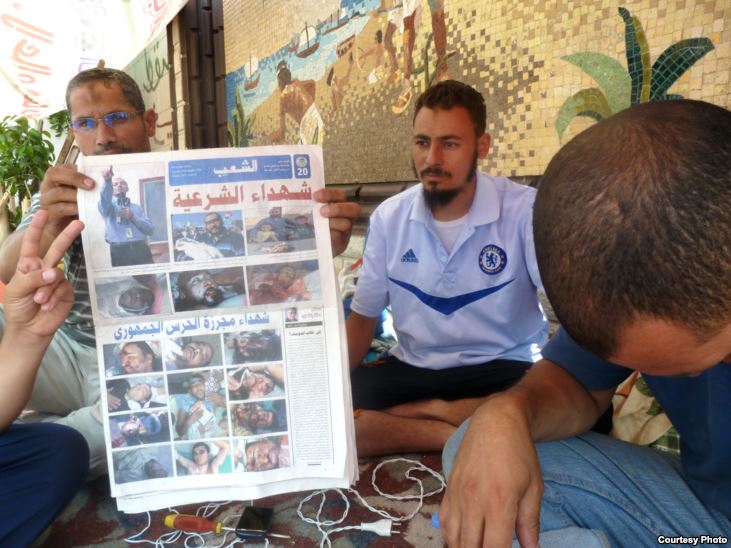By Emily Lieberman and Alina Medhi
LOS ANGELES — More than one year since the start of the COVID-19 pandemic, educational disparities around the world have become glaringly apparent. Education systems in nearly every region of the world have always been disproportionate. The pandemic, however, has severely exacerbated these gaps. While governments attempt to alleviate this crisis, international aid organizations have stepped in to help education systems get back on track.
COVID-19 has severely disrupted progress towards the United Nations’ Sustainable Development Goals — a plan for a more equitable and peaceful world. Sustainable Goal 4, which seeks inclusive and equitable quality education for all, has suffered major setbacks. As schools were forced to turn to virtual methods in an effort to maintain social distancing guidelines and follow public health instruction, many countries have lacked proper technical resources to do so. This disparity has resulted in at least 500 million children lacking access to digital learning during the pandemic. Even if resources are available, there are rising concerns over the efficiency of online learning. Additionally, despite increased school reopenings, only 65% of primary schools have access to sanitation facilities that are necessary for COVID-19 prevention, resulting in disproportionate reopenings around the globe.
The priority for most governments, however, has been their economies. As they struggle to reverse the economic downturn, education has been placed on the back-burner. Focusing on economic recovery leaves little room for the restoration of other sectors like education. In fact, reopening of the economy may cause further setbacks as cases may rise and thus perpetuate school closures.
Even if countries choose to direct efforts towards digital infrastructure to support remote learning, it doesn’t guarantee equal access for all students, as many regions lack internet, proper devices and adequate computer proficiency to utilize these resources. This leaves lower-income countries more vulnerable to educational setbacks during the pandemic. While this disparity has always been an issue, the current heightened dependence on technology has had disastrous effects on an already-imbalanced education system.
Prolonged absences from school have also been associated with lower retention and graduation rates and worse learning outcomes — especially for younger children. While some countries were able to quickly switch to an online learning mode, countries like Ghana did not launch a program until mid-June 2020 — losing learning time that cannot be recovered. As these effects are likely to spill into the post-pandemic world, it is increasingly vital that these educational gaps are filled now.
As governments navigate this dynamic public health crisis, the education sector has been left behind. The responsibility to pick up the pieces and assist government education ministries and offices thus falls on international aid organizations.
For the most part, international aid organizations have stepped up to the challenge. Since 2000, education aid has increased significantly, though it has stagnated in the past decade. The introduction of COVID-19 should accelerate this standstill and produce growth in aid rates as international donors prioritize educational recovery from the pandemic’s effects.
Various international actors are investing in creating sustainable educational programs to keep children in school. One prominent initiative comes from the World Bank in partnership with the United Nations Educational, Scientific and Cultural Organization (UNESCO), the United Nations Children’s Fund (UNICEF) and the Global Partnership for Education (GPE). Implementing a $25 million Global Partnership for Education Grant for 67 grant-eligible countries, the “Continuous and Accelerated Learning in Response to COVID-19” program aims to create short term efforts to offset school closures.
The grant’s central goal is to deliver new and existing learning interventions at scale. Some measures headed by the World Bank include conducting a study of the effectiveness of remote learning across 10 countries, developing learning packages including books and other materials to 14 countries, and identifying low tech solutions for distanced learning. The grant funds efforts from April 2020 throughout October 2021.
Beyond these efforts, the Global Partnership for Education has mobilized over $500 million to support partner countries with implementing their pandemic responses. Some efforts include hygiene and psychosocial support programs and preparations for reopening schools by ensuring facilities are safe for students and staff to attend in person. Over 40% of these grants support low tech solutions, such as TV and radio broadcasts. Another 35% of the grants go towards printed materials such as books and learning worksheets. 87 countries received a COVID-19 planning grant at the start of the pandemic, totaling at $8.8 million.
Countries have used these grants in different ways, however, all have found unique learning solutions to help combat rising educational disparities.
In Sudan, before the pandemic, about 2.5 million children were not in school. Even for those attending classes, resources were scarce, making the switch to independent learning difficult. Using its $11 million GPE grant to develop distanced learning solutions for 5.4 million students, Sudan created TV and radio lessons and bought 287,000 children radios with solar-powered chargers. These efforts, combined with printed materials, have helped keep children learning even at a distance. In Sudan, one in six educators are typically paid by the local community, meaning school closures have drastically affected their livelihood. Grants to provide teachers with stipends and cellular data to communicate with students offer incentives for teachers to continue teaching virtually.
In Pakistan, similar to Sudan, GPE’s $20 million grant aims to provide funding for lessons aired on television or radio. The lessons are particularly targeted towards girls, emphasizing the importance of learning. In Papua New Guinea, GPE’s grants are funding learning kits geared towards individual students’ needs. For example, for students with a visual impairment, a kit may include braille or large print materials. Children are also receiving solar lamps and stationary. Beyond this, funding is being directed towards developing handwashing stations and hygiene kits.
Other international organizations have utilized similar tactics to fund either specific countries or groups of students. Plan International, the Stromme Foundation and Educate a Child launched the Primary School Access through Speed Schools (PASS+) project in West Africa, with aims to get over 180,000 children back in classrooms. This project seeks to provide a speed school model of education, which covers primary school curriculum for classes 1 through 3 via an intensive nine-month course for children in Burkina Faso, Mali and Niger. This project specifically aims to tackle primary school education, particularly children who have never enrolled in school.
Within the United States, educational aid organizations such as Save the Children are assisting with delivering nourishing meals to children who can no longer rely on school for lunches. Additionally, Save the Children funds food pantries and delivery services to more rural school areas, helping build off their already existing U.S.-based programing which focuses on providing educational materials to children living in poverty.
Other international organizations have sought to monitor and evaluate governments’ in-country educational strategies and interventions by surveilling country offices and various ministries of education.
Published in November 2020, the “Education in Emergencies: UNICEF Interventions in Latin America and the Caribbean during COVID-19” report, indicates COVID-19 has affected more than 150 million learners in the Latin America and Caribbean region alone. The report, focusing on 25 country offices and in-depth interviews with country offices in Ecuador, Guatemala, Jamaica, Nicaragua, Peru and Uruguay, breaks down UNICEF’s major education interventions in Latin American countries. 44% of the 25 country offices reviewed were conducting teacher trainings, with Costa Rica notably providing teacher trainings in digital media for over 66,000 teachers, representing 99% of teachers in the country. Quality teachers are a cornerstone of good education, especially in times of crisis. With only 44% of country offices conducting teacher trainings, monetary and educational aid is still needed in the region to support educators’ continual efforts to teach during the pandemic.
The report indicates that the most widely used digital distance learning strategy involves television. In countries where TV ownership is high, educational channels can serve as a way for students to continue learning from home. For example, in Ecuador, over 100 educational programs are being broadcasted. However, problems arise with this system, as six in ten households in Ecuador do not have access to a television. One solution to this issue that various countries have attempted is delivering educational programming via radio. In Peru, where almost 10% of the population lives in areas with minimal internet access, country offices are supporting secondary school programming in rural areas. Some countries, such as Brazil, have introduced podcasts series such as “Deixa que eu conto,” that broadcasts stories for young children and families.
This work being conducted by country offices, ministries of education and international actors is essential for making sure education continues during the pandemic.
The European Union (EU) and UNICEF created a 5 million euro program in the Western Balkans and in Turkey to help over 450,000 children and parents access public services to promote childhood development and education. In Bulgaria, Montenegro, Kyrgyzstan and Uzbekistan, UNICEF has worked with multiple ministries of education to help provide resources to children with learning disabilities. Some of these strategies include sign language visual tools and multi-language subtitles. Additionally, UNICEF has helped provide learning at home toolkits with daily activities for learning.
The efforts of these interventions are to make all education systems more resilient and responsive to future crises. There are still many challenges ahead, but as countries begin to reopen schools, more resilient systems are expected to be in place to ensure all students can continue learning.
Education systems around the world have suffered due to the pandemic. Not only is there a need to make up lost ground, but this is also the most important time to lay the groundwork for stronger and more equitable systems for the future.
If international donors continue to focus efforts towards education even going beyond the pandemic, significant progress will be made in the sector — not only filling COVID-created gaps but old ones as well. Introduction of technology to support remote learning creates the possibility that these resources will be available even after the pandemic.
Even the current public health efforts that include advances in school hygiene or general health will help alleviate educational disparities. Safer health practices in schools along with increased vaccination rollout efforts will ensure an accelerated return to schools. These advancements will also remain beyond the course of COVID-19, helping many areas that previously lacked such resources to provide safe health standards in schools.
This is not to diminish the experiences of the millions of children who remain out of school or with limited access to education due to COVID-19. International donors have, by no means, reached every school in need nor is it likely that they will. However, the efforts so far are promising and must be furthered to negate the setbacks brought by the pandemic.
As global efforts to achieve the Sustainable Development Goals continue, the international education system must be prioritized now more than ever to ensure accessible quality education for all.





